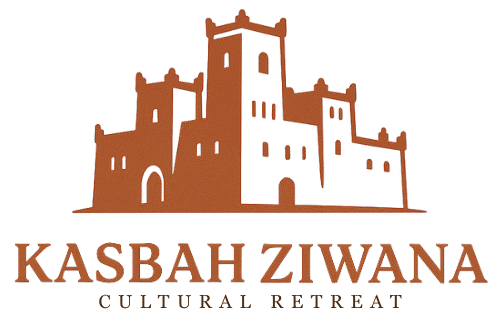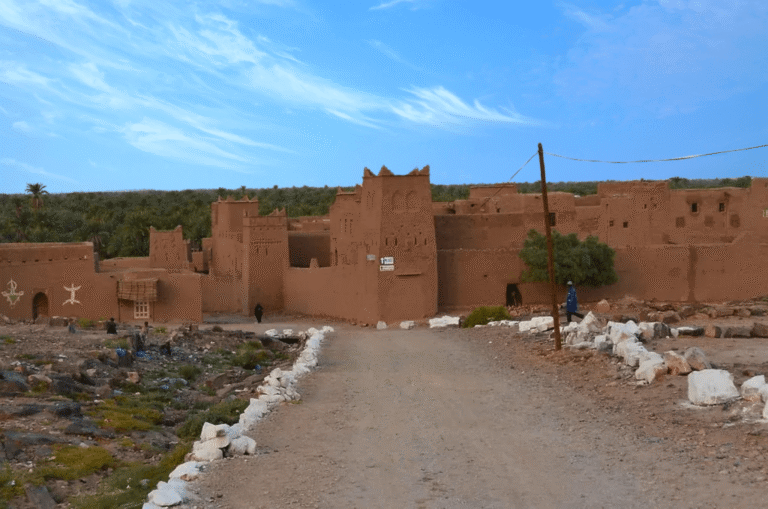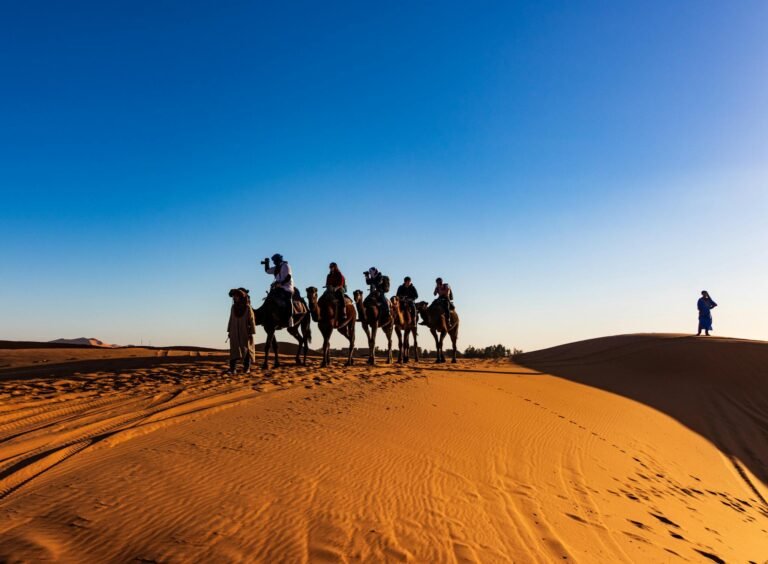Atelier Bannour – Mohamed Bannour: The Soul of the Desert on Canvas
Atelier Bannour – Mohamed Bannour: The Soul of the Desert on Canvas
Introduction
Who is Mohamed Bannour?
Born on January 24, 1969, in Zagora, Morocco, Mohamed Bannour is more than an artist — he’s a bridge between ancient heritage and modern expression. A self-taught painter, calligrapher, and sculptor, he uses art as a spiritual and cultural compass, pointing back to the soul of the Moroccan desert.
Why His Work Matters
In a world dominated by fleeting trends, Bannour stands firm in authenticity. His pieces are living echoes of Amazigh identity, desert mysticism, and ancestral symbolism. He’s not just painting — he’s preserving, translating, and reimagining Berber heritage for the world.
Early Life & Artistic Roots
Growing Up in Zagora
Zagora, nestled at the edge of the Sahara, shaped Bannour’s early imagination. Its sun-drenched dunes, oasis palms, and timeless silence carved themselves into his artistic soul. As a child, the desert was both his playground and his muse.
Influence of Marie-France Pérez
The turning point in Bannour’s career came in the 1990s when Marie-France Pérez, a French cultural figure, recognized his talent and encouraged his artistic pursuit. Her support was pivotal in giving his self-taught genius a stage.
The Self-Taught Journey
Without formal training, Bannour learned by doing — experimenting with colors, carving wood, and mastering calligraphy as both a visual and mystical form. His art speaks the language of passion, patience, and purpose.
Artistic Style & Inspirations
Berber Motifs and Desert Heritage
Bannour draws from a symbolic well — ancient Amazigh tattoos, prehistoric rock engravings, and ornamental motifs found on desert pottery and jewelry. These symbols don’t just decorate — they communicate stories, protect spirits, and connect generations.
The Power of Calligraphy
For Bannour, calligraphy is a talisman. Arabic script is not only written language but an art form that can transcend visual borders, blurring the lines between meaning and emotion. His painted letters carry weight, rhythm, and resonance.
A Fusion of Geometry and Soul
You’ll find both precise geometric forms and organic, flowing shapes in his work. This duality mirrors life in the desert: structured yet wild, harsh yet peaceful. Every stroke feels like a heartbeat in the sand.
Themes Behind the Brushstrokes
Light, Freedom, and Tolerance
Bannour’s art often dances with light — not just visually, but philosophically. His themes of freedom and tolerance reflect Morocco’s rich, multicultural legacy, and his hope for a future built on harmony, not division.
Spiritual Symbolism
Spirituality isn’t just a theme — it’s embedded in every brushstroke. His works feel like visual prayers, meditations on the soul’s vibration, and how art can elevate human consciousness.
Cultural Identity and Memory
Bannour is fiercely proud of his Amazigh roots. His art serves as a memory archive, preserving traditions, languages, and symbols that risk fading in today’s fast-paced world.
Techniques and Mediums
Acrylics on Canvas and Wood
Bannour’s primary tools are acrylic paints, often layered on canvas or carved wood. His surfaces come alive with depth, creating a tactile connection between viewer and material.
Use of Leather, Sand, and Organic Materials
Desert sand? Leather? Yes. Bannour blends traditional and found materials to anchor his work in its physical landscape, letting nature become part of the narrative.
Mixed Media and Visual Textures
His use of mixed media turns static images into textured experiences. You don’t just see his art — you almost feel the grit of sand, the lines of calligraphy, the weight of memory.
Notable Works and Their Stories
“Immigration” (2018)
A haunting portrayal of journey, identity, and uprooting, this piece speaks to the pain and hope of migration, deeply relevant in today’s global climate.
“Identité Tatouée” (2018)
This work dives into the permanence of identity, symbolized through tattoo motifs that reflect Amazigh heritage — etched on bodies and now on canvas.
“Vibration de l’âme” (2017)
This emotional piece is a visual frequency, channeling the inner sound of the soul. It’s less about what you see and more about what you feel.
“L’œil de l’âme” (2018)
Translating to “The Eye of the Soul,” this painting blurs the line between the physical eye and the inner vision — an artistic interpretation of intuition and truth.
Exhibitions and Global Reach
Moroccan Highlights
From the Rose Festival in Kalaa M’gouna (1997) to showings at the Goethe Institute in Rabat, Bannour’s Moroccan exhibitions celebrated both local pride and artistic evolution.
European and African Presence
He’s been seen in France (Évire, Mulhouse), Germany (Düsseldorf), Italy (Giavera), Portugal, Mali, Switzerland, and more — showing that desert-rooted art can bloom globally.
Cultural Exchange Through Art
His works are windows into desert life and spirituality, offering international audiences a rich slice of Moroccan identity.
The Atelier in the Desert
Where Creativity Meets Nature
Located about 8 km from Zagora, the Atelier Bannour is perched amidst sweeping desert vistas. It’s a studio, sanctuary, and storybook rolled into one.
A Destination for Art Lovers
Whether you’re an artist, collector, or curious traveler, a visit to Bannour’s atelier is like stepping into a spiritual oasis of creativity.
How to Visit and Connect
Address: 45 Ksar Tissergat, Zagora, Morocco
Email: mohamed@atelierbannour.com
Phone: +212 662 404 344
Website: https://www.atelierbannour.com/
Legacy and Future Vision
What Bannour Represents Today
Mohamed Bannour is not just an artist — he’s a guardian of culture, a spiritual guide, and a voice for forgotten narratives.
Teaching the Next Generation
His dream? To pass on not just techniques but values — freedom, identity, and beauty — through workshops, mentorships, and community art.
Expanding the Global Dialogue
With each exhibition, Bannour expands the cultural conversation, proving that the desert is not empty — it’s full of meaning.
Conclusion
Mohamed Bannour is a storyteller, a symbolist, and a soul whisperer. From the heart of the Moroccan Sahara, his work echoes across borders and generations. If you ever find yourself in Zagora, don’t just see the desert — see it through his eyes.
FAQs
What inspires Mohamed Bannour’s work?
His inspiration comes from Amazigh heritage, desert landscapes, spiritual symbolism, and calligraphy, blending past and present through powerful imagery.
Where can I see his art?
You can visit his atelier near Zagora, attend his international exhibitions, or explore his work via atelierbannour.com.
Is his atelier open to the public?
Yes! You can schedule visits to experience his creative space, just reach out by email or phone in advance.
What techniques does he use?
He specializes in mixed-media acrylics, using materials like wood, leather, desert sand, and traditional calligraphy.
How does his work preserve Moroccan heritage?
By weaving ancient motifs, oral traditions, and cultural symbols into contemporary art, he keeps Morocco’s diverse identity alive and vibrant.




